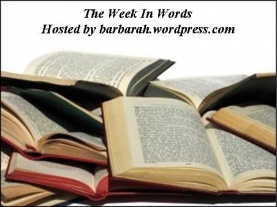I live within minutes of my “home” office, but I drive around five hours a week to consult with my other two facilities.
This gives me plenty of time to listen–
and since I decided to be ambitious and include audio works that are an independent work of art in my “read every book” goal, it gives me a chance to breeze through Eiseley’s compact disc collection.
I’m almost done with the Christian music section–and I’ve made decent headway in classical and jazz. With trepidation, I’ve checked out a few rock and roll CDs.
But when I was trolling the library during my last visit, I happened upon a set of discs that fascinated me greatly.
The Words and Music of World War II.
“Cool.” I thought, and threw it in my basket.
If only I’d known.
As it was, I didn’t open the case or bother to look at it further until several weeks later when I’d just finished my current CD and was ready for another for my commute.
I happened upon this title and popped it in to hear something spectacular.
An air raid siren sounds.
A crackling radio voice informs me that Pearl Harbor has been attacked.
Music fills my car, forties swing reminding me to remember Pearl Harbor.
President Roosevelt begins his iconic address “a date which will live in infamy…suddenly and deliberately attacked…”
Forties swing takes me away again.
Back and forth it goes, a narrator describing the events of the war–then a song from that era. A radio reporter tells of flying over Germany with a group of bombers–then music. Announcers tell British parents exactly what items their children should carry in the hand luggage they take to school the day they will be evacuated to the country to escape the air raids. Another song fills the airwaves.
Two full discs, a drive to and fro. Music and memories, sad and sweet, crazy and comical.
It was a much different look at the war than the picture I’d been reading from inside Germany. This was the home front. America. Great Britain.
This started much later, only after Germany had invaded Poland and Great Britain declared war, making it an official “World” War.
But it was a necessary look. A reminder of how others’ lives, so far away, were affected or not affected by what was occurring in Europe and the Pacific.
And it was fun–swinging, rollicking tunes. Sad, sentimental songs. Hilarious bits like “Atom and Evil”.
Hearing History, almost like living history–a tiny piece of what life was like then.







